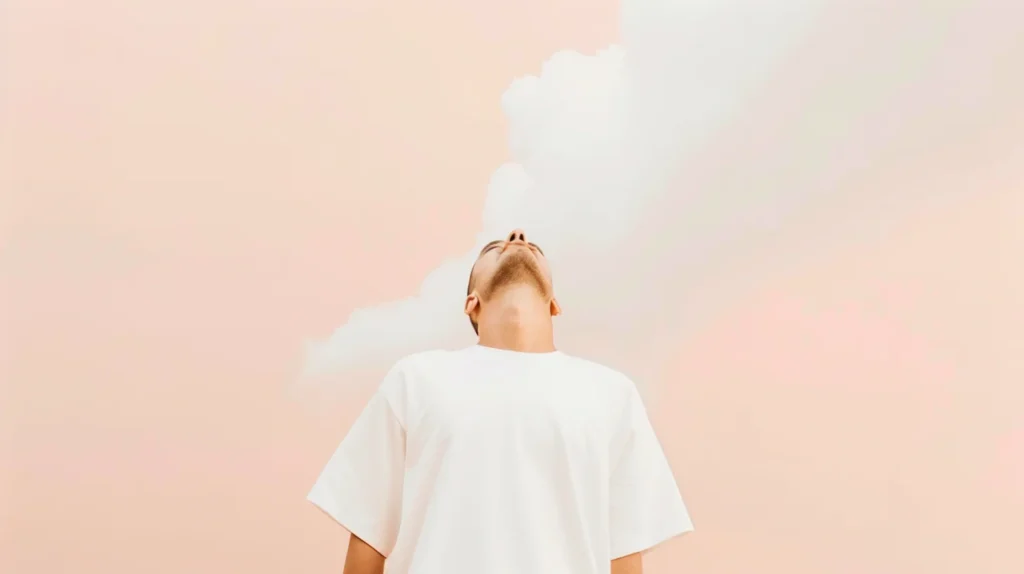
Perhaps you find yourself here because, after months or even years spent in talk therapy and taking standard antidepressants, the relief you have experienced has been only temporary and incomplete. I know how demoralizing it feels to pour energy into your mental health and still wake up with the same heavy thoughts. Yet you also might feel uneasy about the newer options you see in the headlines – especially ketamine. Does it actually heal, or is it just a medically sanctioned “trip”?
This question isn’t trivial. In fact, it has profound consequences for safety, stigma, and your willingness to try something truly transformative. As you weigh your options, consider that depression and PTSD are not only stubborn but also costly – in lost productivity, strained relationships, and personal suffering.
So the question “Do ketamine infusions get you high?” is not just about semantics; it’s about whether the experience will push you toward healing or toward greater worry and loss of control.
I wrote this article to clear up the confusion, combining evidence, clinical anecdotes, and my own journey of founding Field Trip Health clinics across Canada. By the end you should understand exactly how a therapeutic ketamine session differs from a recreational high, what risks are real, and whether our integrated approach might be the next logical step in your recovery plan.
My Patients’ Most Common Question: What Do We Even Mean by “High”?
When you use the word “high,” you might imagine an impulsive dose taken at a party, amplified music, swirling lights, and a blurred sense of reality. In that setting, the goal is often raw euphoria or escape. The dosing is unmeasured, the environment chaotic, and there’s no roadmap for turning the experience into meaningful change afterward.
Therapeutic ketamine, by contrast, unfolds in a very different landscape. I administer carefully calculated, sub-anesthetic doses – usually between 0.5 mg and 1 mg per kilogram of body weight – while you recline in a quiet, softly lit room. The distinction goes beyond atmosphere. The intention guiding the drug matters every bit as much as the molecules in the syringe. Our aim is not to blot out reality but to ease rigid neural loops, allowing you to explore entrenched thoughts or trauma from a safer, more spacious vantage point.
Ketamine 101 – A Quick Primer You Deserve to Understand
Ketamine emerged in 1962 as an anesthetic that worked quickly and, unlike many anesthetics, didn’t suppress breathing. Decades later researchers noticed something astonishing: when given at much lower doses, patients often reported a rapid lift in mood, sometimes within hours. That observation launched a wave of studies that continue to shape psychiatry today.
So how does ketamine accomplish this? The drug blocks the NMDA receptor, a molecular gatekeeper for the neurotransmitter glutamate. When that gate is shut, glutamate temporarily surges elsewhere in the brain. The surge triggers the release of brain-derived neurotrophic factor, or BDNF, which acts like a growth fertilizer for neuronal connections. Over the next several days your brain becomes more plastic, meaning it is more willing to break old, maladaptive loops and form new, healthier ones. In my experience, the medication itself is a catalyst. The sustained gains arise when you use psychotherapy and lifestyle adjustments to shape that malleability.
Infusion vs Recreational Use – Why Environment, Dose, and Intention Change Everything

You may have seen headlines describing ketamine as a “club drug.” While that is historically accurate, the comparison quickly breaks down in clinical practice. During a recreational binge, doses often exceed 1.5 mg per kilogram, and no one is monitoring your cardiovascular response. The setting is sensory overload, and the experience ends as abruptly as it began, leaving no structured support for integration.
In our clinics the ketamine dose rarely exceeds 1 mg per kilogram, and sometimes we start even lower if you have cardiovascular risk factors. The environment is deliberately calming – soft earth-tone walls, curated playlists designed to scaffold a reflective mindset, and staff who speak in hushed tones so your nervous system shifts from fight-or-flight to rest-and-digest. Finally, intention binds everything together. You arrive having set clear therapeutic goals with your psychotherapist, and the infusion is only one chapter in a multi-session arc that includes preparation and integration.
When clients ask me whether they will feel “high,” I respond that they will likely feel dissociated – a gentle stepping back from daily identity and the inner critic. You won’t be wandering hallways in search of stimulation. Instead you’ll be reclined, eyes lightly covered, engaged in a curated soundscape that supports insight rather than thrill seeking.
Ketamine Dissociation vs Intoxication – A Therapeutic Reframe
During the ketamine infusion many people report floating sensations, time dilation, or a dreamlike review of personal memories. Far from being a disorienting “trip,” these experiences create emotional distance from pain points that previously felt overwhelming. Dissociation of this kind is temporary. Orientation and motor control generally return within 30–60 minutes after the IV line is capped.
Importantly, you are not alone in that moment. A registered nurse tracks your blood pressure, heart rate, and oxygen saturation throughout. If you feel uneasy, we can adjust the ketamine infusion rate or add a small dose of an anti-nausea medication. Once you are physically stable, you meet with a therapist that same day or the next to translate ephemeral images or insights into concrete steps, such as rewriting self-talk scripts or scheduling trauma-focused therapy sessions.
That therapeutic arc is critical. Without it, the neurobiological window of plasticity could close before you harness its full potential. In fact, I’d argue that the medicine is only as effective as the psychotherapy that follows, just as wet clay is only useful if you shape it before it hardens.
The Field Trip Health Model – Why Ketamine Is Only One-Third of the Experience
I designed our protocol around three pillars: preparation, administration, and integration.
Before your first infusion you spend a full session with a psychotherapist clarifying goals and practicing grounding techniques, because a clear intention becomes your compass when the usual chatter of the mind goes quiet.
During administration you recline in a zero-gravity chair, draped in a weighted blanket that adds proprioceptive comfort. We provide eyeshades to minimize external stimuli and noise-cancelling headphones loaded with music that has been tested for therapeutic pacing. An RN programs a digital infusion pump so the rate remains constant or can be gently titrated based on real-time feedback. A physician remains either in the room or steps away, and an ACLS-equipped emergency cart stands ready – although, we have never had to intubate or use it for anything beyond routine blood-pressure management.
Integration begins as soon as you are alert. Sometimes you dictate a voice memo while the imagery is still vivid. Sometimes you prefer quiet reflection until the morning. Either way, a trained psychotherapist helps you translate the felt experience into daily behavioral changes, whether that means cultivating a morning mindfulness practice, reorganizing a support network, or finally addressing unresolved trauma in a structured modality.
Hybrid Care: How We Extend the Clinic Experience into Your Home
Because many of you live hours from our physical clinics – or prefer the privacy of your own space – we also offer Field Trip at Home. Once you have completed at least two in-clinic IV sessions and meet medical eligibility, we can prescribe sublingual ketamine lozenges for virtual sessions.
The structure and intention remain identical. The venue simply becomes your living room. This hybrid model widens access without diluting safety, bridging the philosophical divide between hospital precision and holistic comfort.
Ketamine Safety Protocols
As a family physician steeped in hospital medicine, I cannot overstate the importance of rigorous screening. You begin with a 60-minute medical intake where I review cardiovascular history, psychiatric diagnoses, medication lists, and any red flags like uncontrolled hypertension, history of psychosis, or pregnancy. If labs or an ECG are warranted, we arrange them before the first dose.
During infusions your vital signs populate a real-time dashboard. Hypertensive spikes above 160/100 prompt pausing the infusion or administering a small antihypertensive; transient nausea responds to ondansetron. Hallucinations of the frightening kind are rare, but if they arise, we slow the drip and provide reassuring verbal grounding. That diligence explains why severe adverse events are statistically uncommon.
Still, you deserve transparency about side-effect prevalence. About 40% of patients receiving multi-infusion ketamine protocols for chronic pain report at least one side effect, most commonly hypertension or nausea. What matters is that these effects are predictable, manageable, and transient when you are in a clinical setting staffed by professionals who have seen them before.
Who Is an Ideal Candidate for Ketamine Therapy – and Who Should Wait?

You may be a strong candidate if traditional antidepressants have left you unmoved, or if talk therapy helps intellectually but fails to penetrate the visceral layers of trauma and hyper-arousal. Adults between 30 and 60 most often seek us out, but age alone isn’t decisive. Overall medical stability and motivation for psychotherapy weigh more heavily.
Conversely, if you have uncontrolled bipolar mania, untreated psychosis, or severe cardiovascular disease, I would advise addressing those issues first. Likewise, pregnancy is an exclusion until more data emerge. Ketamine can elevate blood pressure and – to a lesser extent – heart rate, so hypertensive patients require meticulous control before starting. Every rule has exceptions, but we err on the side of caution because the therapy only retains value if the risk-benefit ratio stays clearly in your favor.
A Client Story That Distills the Difference Between Ketamine “High” and Healing
No amount of clinical jargon replaces the human voice of someone who has walked the path you’re considering. Mark, a veteran of emergency services, arrived at our clinic hollowed out by years of traumatic calls. After six infusions paired with psychotherapy he told us:
“Even though I was apprehensive and nervous going into the treatments, I felt incredibly relaxed, calm, and at peace when I came out of the treatments an hour or so later.”
Mark hadn’t come to get ketamine high. He arrived after conventional tools had reached their limits. What he experienced was not a reckless escape but a structured exploration that dismantled armor he had worn for decades. Today he carries a cautious optimism – his words – that feels durable rather than elusive.
Addressing Medical Ketamine Misconceptions One by One
You might worry that medical ketamine is merely recreational use with a white coat. In fact, the pharmaceutical supply chain and dosing standards differ sharply from street formulations, whose purity varies wildly and often includes adulterants.
Another fear is loss of control; yet the design of our rooms and the presence of trained staff make embarrassing outbursts highly unlikely.
Some people assume benefits evaporate once the drug leaves the bloodstream. In my experience, when integration is thorough, therapeutic gains last months and sometimes years. The neuroscience backs this up: ketamine initiates a cascade of synaptic remodeling that persists beyond the acute dose.
Insurance coverage is evolving. While public plans in Canada have not yet adopted KAP, many extended health benefits now cover portions of the psychotherapy component. Our admin team helps you navigate those claims so finances don’t cloud your clinical decisions.
Finally, a word about do-it-yourself approaches. Ordering ketamine online opens the door to dosing errors, contaminated product, and the absence of therapeutic framing. In fact, trying to replicate an entire clinic ecosystem on your own negates the very factors – safety, structure, and integration – that make ketamine effective.
A Closer Look at Ketamine Therapy
You may wonder how many ketamine sessions you’ll need. For mood disorders we start with six IV or intramuscular infusions over three to four weeks, because research shows a cumulative effect. For chronic pain the schedule can be more condensed, followed by titrated boosters.
Driving home the same day is not permitted. Mild cognitive fog can linger for hours, so you’ll need a trusted ride. Most clients return to baseline functionality by the next morning, but I advise delaying complex legal or financial decisions until 24 hours have passed.
Regarding medication interactions, SSRIs and SNRIs generally coexist peacefully with ketamine. Benzodiazepines can dull its antidepressant effect, so we often create a reduction plan. Mood stabilizers like lithium require case-by-case assessment.
During the ketamine infusion itself you might feel a lifting out of your body, as if viewing your life from a mezzanine level. Some clients revisit long-forgotten memories, while others encounter purely abstract visuals. Initially that variability unsettled me as a physician, but I now see it as the mind choosing whichever language – literal or metaphorical – best conveys buried truths.
Relief can appear rapidly. A study of 44 patients with mood disorders undergoing a four-infusion protocol showed that nearly 46% met response criteria after the final infusion, meaning their depressive symptoms dropped by at least half. That said, everyone’s trajectory differs. Some feel lighter after the first infusion, others after the third, and a minority require booster series months later.
How to Choose a Ketamine Clinic

While I’m proud of the model we’ve built at Field Trip Health, my larger mission is to elevate standards everywhere. So wherever you live, ask each ketamine clinic whether a physician is onsite during infusions and whether staff are ACLS-certified.
Clarify the psychotherapy framework: preparation and integration should flank every dose, not exist as optional add-ons.
Evaluate the physical environment – is it soothing or sterile?
Ask about evidence alignment. Does the clinic follow published dose ranges and exclusion criteria, or do they offer dubious “ego-dissolution packages” at extra-high doses?
Finally, demand up-front transparency about costs. Healing is challenging enough without surprise invoices.
The Transformative Power of Ketamine Clinic Setting – More Than Aesthetics
When I opened the original Bay & Algoma clinic in Thunder Bay, I refused to mimic hospital decor. I had spent enough nights on call in fluorescent wards to know how stress percolates through the environment. So we chose earth-tone palettes, cedar accent walls, and subtle essential-oil diffusers. Each room offers adjustable lighting, and we keep emergency equipment discreetly tucked behind artful cabinetry.
This attention to sensory detail isn’t indulgent. It’s evidence-informed. When your sympathetic nervous system quiets, ketamine’s neuroplastic window widens. In a setting that feels like a high-end meditation studio, you are more likely to enter the soft focus that facilitates insight, rather than the jittery vigilance that blocks it.
Rewriting the Narrative Around Ketamine Healing
So, do ketamine infusions get you high? In a hedonistic, escapist sense, no.
In a therapeutic sense they induce a state of consciousness that loosens the grip of entrenched mental loops, allowing you to examine and revise them. That state can feel expansive, even profound, but it is shepherded by clinicians, structured by psychotherapy, and executed with medical precision.
If you find yourself at a crossroads – exhausted by conventional treatments yet cautious about venturing into psychedelic territory – I encourage you to gather data, ask hard questions, and honor both your hope and your discernment. Transformation is neither automatic nor guaranteed, but with the right team, the odds tilt dramatically in your favor. Just consider that after six infusions, 80% of veterans in one study achieved remission from PTSD while 93% responded to depression treatment, as reported by a landmark trial. Numbers cannot tell your unique story, but they can illuminate the trail ahead.
I hope the article has replaced fear with clarity and curiosity. If more questions arise, my team and I at Field Trip Health are ready to listen. Healing often begins with the courage to ask, and the next question is yours.
Frequently Asked Questions
Ketamine infusions for treating depression use low doses between 0.5-1 mg per kilogram of body weight under medical supervision. These carefully controlled doses provide therapeutic benefits for treatment resistant depression and other mental health conditions while minimizing adverse effects compared to high doses used recreationally.
Ketamine infusion therapy sessions last 40-60 minutes for the actual infusion under medical supervision. The entire process in a controlled environment with medical professionals takes 2-3 hours including preparation and monitoring. Patients undergoing ketamine therapy should plan for this extended timeframe.
Ketamine therapy can be combined with other treatments for various mental health conditions including depression anxiety and post traumatic stress disorder. However, some medications may reduce ketamine’s effectiveness. A healthcare professional should evaluate all current treatments to ensure safe integration.
Choose reputable clinics with medical professionals on-site during ketamine infusions, ACLS-certified staff, and comprehensive ketamine assisted therapy approaches. The clinic should follow evidence-based protocols for treating depression, maintain a controlled environment, and participate in ongoing research.
Insurance coverage for ketamine treatment varies. Many public health plans don’t cover ketamine infusions for mental health conditions yet, though some extended benefits may cover ketamine assisted psychotherapy components. Check with your insurance provider and mental health provider for current coverage options.
About the Author

Dr. Mario Nucci MD CCFP is a licensed Family Physician with a passion for mental health and the development of new therapies. He is actively engaged in research with a faculty associate professorship at Northern Ontario School of Medicine, and research collaborations with the University of Ottawa, University of Calgary, Lakehead University, Concordia University and Vancouver Island University.
Dr. Nucci is the founder of Bay and Algoma Health Centre in 2019, a walk-in and addiction medicine clinic. He founded the Canadian Centre for Psychedelic Healing in 2019, now operating as Field Trip Health, providing cutting edge mental health care in Toronto, Montreal, Vancouver, Ottawa, Hamilton, Kitchener-